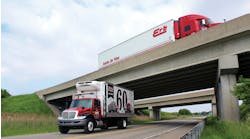A report released by the Federal Motor Carrier Safety Administration (FMCSA) last month yet buried on its website out of public view indicates that both the number and rate for fatal truck-involved crashes nosedived significantly between 2007 and 2009 – the most recent years with available crash data.
From 2007 to 2009, the number of fatal truck-involved crashes fell 31% to 3,215 from 4,633, according to the agency’s analysis, while over that same timeframe, the fatal crash rate for large trucks fell 27%. Altogether, since 2000, the fatal crash rate has fallen from 2.2 crashes per 100 million miles to 1 crash per 100 million miles, FMCSA noted in its report.
On top of that, FMCSA’s research showed that in fatal crashes where the database records a “driver-related” factor, 80.5% of the time that factor was assigned to the driver of a passenger vehicle compared with just 22% of such factors being assigned to the commercial driver.
“These safety gains are the result of many things: sensible regulation; improvements in technology; slower, more fuel efficient driving; the dedication of professional drivers and safety directors as well as more effective enforcement techniques that look at all the factors involved in crashes; not just a select few,” noted Governor Bill Graves, president & CEO of the American Trucking Assns. (ATA), in a statement.
However, Graves was particularly distressed that the agency seems to have “hidden” its report on these positive safety trends.
“These results deserve to be heralded as tremendous progress and very good news for American motorists, our industry and our industry’s regulators,” he explained. “However, FMCSA has chosen not to highlight these important results. By not celebrating this success, the agency is doing itself a disservice. We are at a loss on why FMCSA chose not to communicate this final data indicating great safety progress.”
Other data from the agency’s report shows:
- The majority of fatal multi-vehicle crashes (59%) recorded were the result of a passenger vehicle rear-ending a truck, crossing the median to hit a truck head on or hitting a truck in some other way, as coded in the government’s database. In less than 40% of cases, the crash was the result of the truck striking the car.
- The most common driver related factors for commercial drivers are speed (7.3%), failure to maintain lane (6.5%) and inattentiveness (5.7%). Being drowsy, asleep or fatigued was the seventh most common factor at 1.4%.
- The “plurality” of fatal crashes, 31.3%, occurred between 6 a.m. and noon. Conversely, only 17.2% of crashes occur between midnight and 6 a.m.


